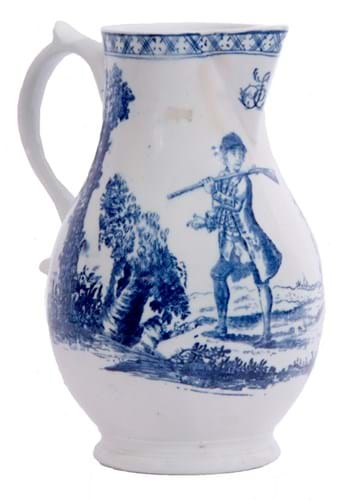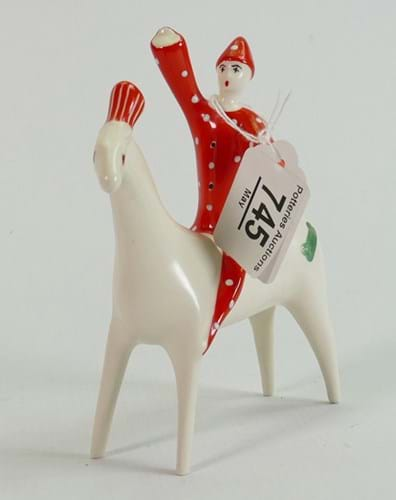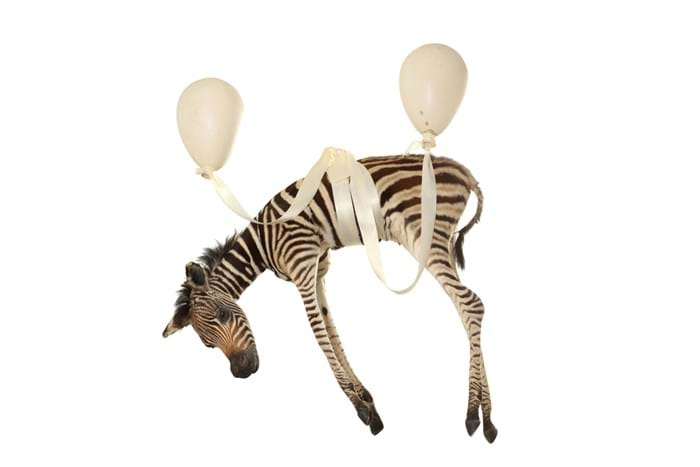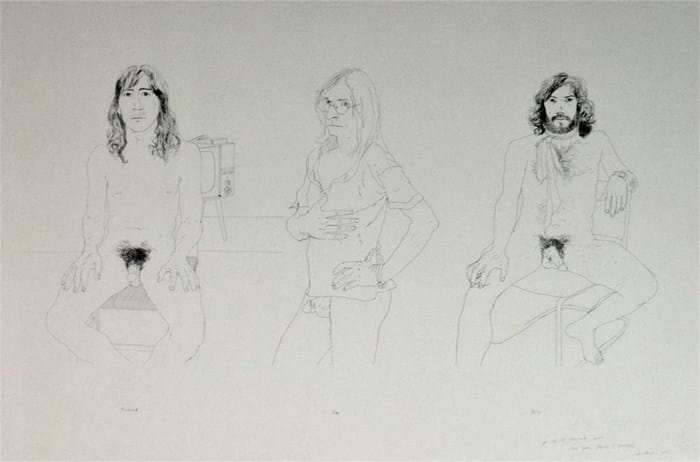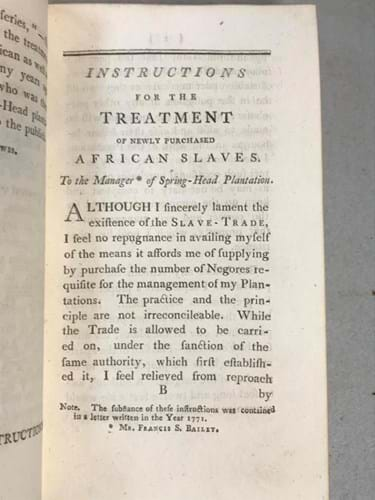1. Lowestoft porcelain jug – £7900
This 8in (19cm) documentary jug was the stand-out piece among 50 lots of Lowestoft porcelain offered by Keys in Aylsham on May 12-13. Known as the ‘Aldred Jug’, its lip is inscribed with the initials SA, probably for Samuel Aldred, grandson of Obed Aldred, who was one of the original partners in the Lowestoft factory.
It is the only known inscribed piece of Lowestoft porcelain with a possible direct link to one of the owners of the factory. The copper plate for the transfer print of a hound and huntsmen is said to have been supplied by a Mr Gamble of Bungay and was the first example of copper plate printing on Lowestoft porcelain.
The jug has a collecting provenance dating back to the late 19th century and has previously been owned by renowned Lowestoft collectors Robert Brown, William Rix Seago, FA Crisp and MM Paul. It featured in the bicentenary exhibition of Lowestoft porcelain in 1957 and in Bernard Watney’s English Blue and White Porcelain of the 18th century (1963).
Estimated at £5000-7000, it took £7900.
2. Beswick figure designed by Colin Melbourne – £1600
The 27 animal models created by Colin Melbourne (1928-2009) for Beswick from 1955 (he also worked for Crown Devon, Royal Norfolk, Wade, Wedgwood and Midwinter) were never the commercial success of more mainstream wares. Melbourne’s mid-century modernism represented Beswick at its most avant garde and appealed to a different buyer than the collector of more naturalistic livestock and equine models. While some of his creations were theoretically made from 1956-70, none sold in any great number and some are very scarce indeed.
Melbourne’s models currently represent a lively collecting niche as shown by Potteries Auctions in Stoke-on-Trent on May 7-8. Leading the dispersal of a massive single-owner collection of Beswick and Doulton wares – thousands of pieces offered in 992 lots – was Melbourne’s model of a red and white clown on a horse.
The smaller of two sizes of this model (number 1470), it was issued by Beswick from c.1956-62. In 2017 another of these had sold for £250 at Hansons.
The example at Potteries was pitched at £300-600 but took £1600 – an auction high for a Beswick Melbourne figure.
3. Floating Zebra – £2200
From the Curious to the Extraordinary, the ‘kunstkammer’ sale at Chiswick Auctions on May 6, included taxidermy by Simon ‘The Stuffa’ Wilson. The UK taxidermist produced the famous ‘Floating Giraffe’ that recently sold in the Aynhoe Park sale for a record-breaking £100,000. He sources animals that have died from natural causes from zoos and farms.
‘Floating’ animals apparently suspended by glass balloons are among his signature creations, with the Chiswick sale including both this gravity-defying juvenile zebra sold at £2200 (estimate £1000-1200) and a similar baby alpaca that made £500 (estimate £700-800).
4. David Hockney lithograph – £8000
Halls’ Modern and Contemporary timed auction, that ran online in Shrewsbury until May 9, featured a single owner collection of 12 etchings by David Hockney bought from galleries in the early 2000s.
It included this example of Hockney’s Oz Obscenity Fund lithograph, created in 1971 in support of the London editors of Oz magazine – Jim Anderson, Felix Dennis and Roger Hutchinson – who stood trial on charges of conspiring to corrupt public morals. Hockney created only 30 of these to raise money towards the legal costs of the trial, choosing to depict the three journalists naked to reflect their innocence. Numbered 11/30 and estimated at £2000-4000, it took £8000.
5. Gibbes second edition – £7500
In Instructions for the Treatment of Negroes (1797), author Sir Philip Gibbes (1731-1815) makes the case for the regulation rather than the abolition of slavery. He begins: “Although I sincerely lament the existence of the slave trade, I feel no repugnance in availing myself of the means it affords me of supplying by purchase the number of Negroes requisite for the management of my plantations. The practice and the principle are not irreconcilable.”
Gibbes, the owner of a large plantation in the West Indies, was a member of both the Barbadian Society for the Improvement of Plantership and the Society for the Propagation of the Gospel in Foreign Parts. He published several works on ‘responsible’ plantation ownership as the calls for abolition grew louder. This second edition of Instructions was reprinted a decade after the first (1786) with additions that drew on the writing of the physicist Sir Benjamin Thompson, Count Rumford.
In addition to the 19th century bookplate of William Markham, Esq. Becca Lodge, Yorkshire, this rare copy included a presentation inscription in ink to the Archbishop of York from Philip Gibbes dated May 1797.
Offered for sale by Cheffins in Cambridge on May 6, it was bid well above its £800-1200 estimate, bringing £7500.


